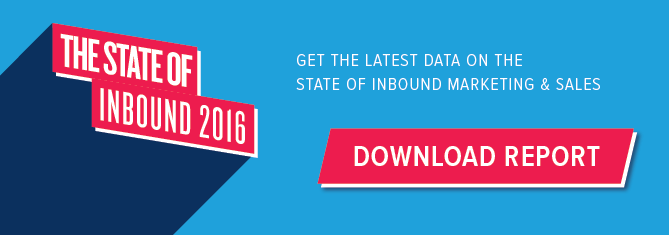Why People Unsubscribe From Your Emails And What To Do About It
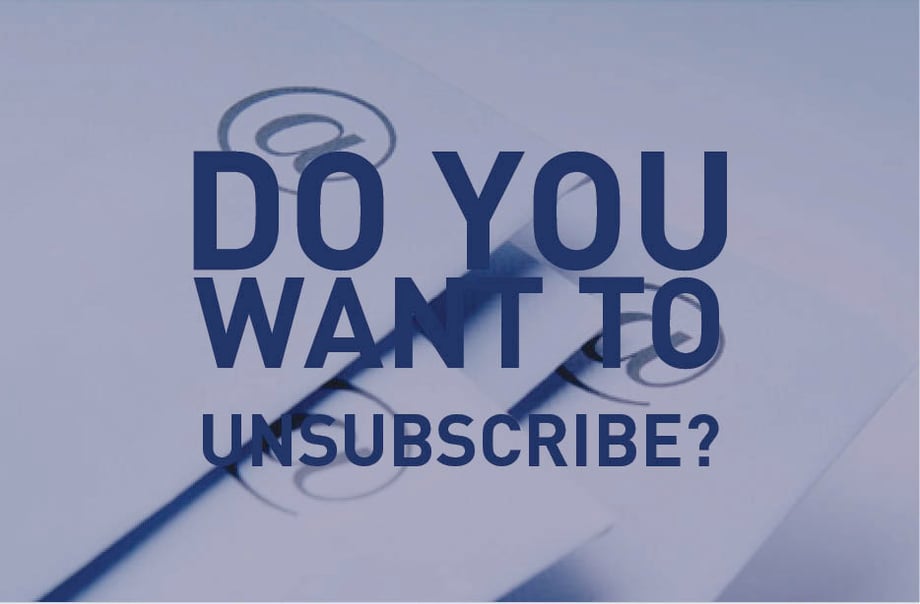
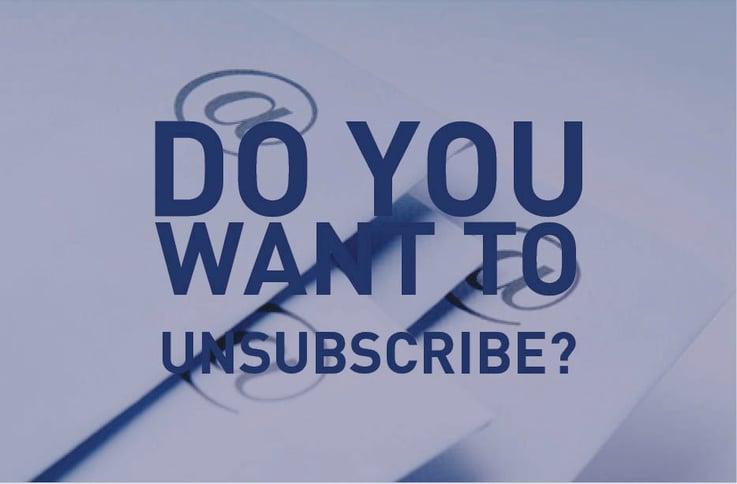
Email notifications are still very relevant today. According to the State of Inbound report 2016, released by HubSpot today with lots of new data, when something new is published on a site that is of interest to them, they still prefer email over any other type of notification. Have a look at the graph below.
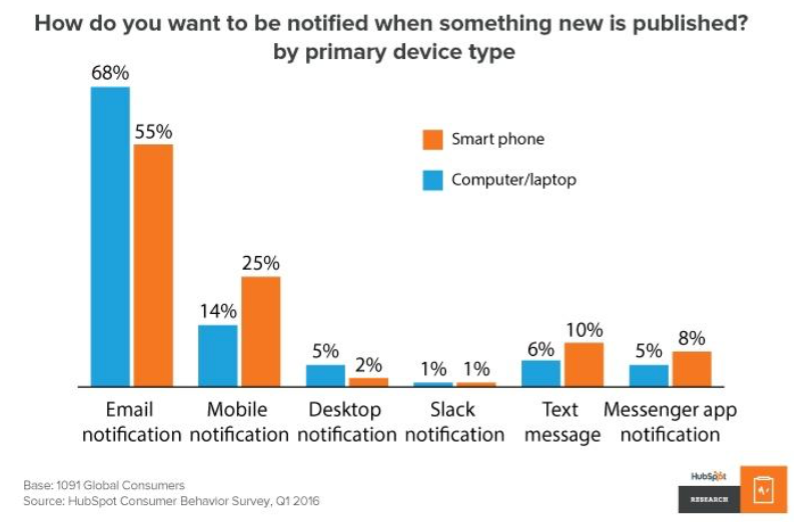
However, what is most disheartening for a marketing or sales professional, or even a small business owner, is when you put lots of time and effort into building your email list, only to see people unsubscribing from it. Let's have a look, according to the State of Inbound 2016 report, what the most common reasons why people unsubscribe are and suggest solutions to stop this from happening.
Answer 1. Sending too many emails
We all struggle to get to a zero inbox every day, and I am sure you would agree with me that most of the stuff that clutters our email is spam, newsletters or automated emails. Therefore, it's no surprise that 78% of people have responded that they tend to unsubscribe if the company sends them too many emails.
Solution
The best way to avoid this from happening is to put the subscribers in power and get them to choose the frequency of the notifications. When they subscribe to your newsletter, give them the option to get notified weekly or monthly about new posts, and the ability to update this information later on.
However, what can you do with the contacts who are already in your list to avoid losing them? Unsubscribe them all!!!
You might think I am completely crazy here, but let me tell you about a little experiment we ran here at Purple Frog. A few months ago, I was afraid we were bombarding our list with too many notifications, as we had a list of contacts that were a mix of subscribers, leads, clients, ex-clients, collaborators, etc. and we sent out our blog's newsletter to all of them on a weekly basis, plus all our other communications and news on top of that. That was a lot of emails, and I could see that the engagement levels weren't goot, with a low open rate and an even lower click-through rate. Therefore, we were sending all these emails to all these people, but hardly anyone was engaging them them.
So I decided we had to do something drastic about it, and I unsubscribed absolutely everyone on our database from our weekly newsletter. I then sent an email out to everyone telling them that they had been unsubscribed, but if they had found our content useful up to that time, they could resubscribe by clicking on a link, and choosing the notification frequency they preferred and selecting what topics they were most interested in. The result was incredible. A good portion of the contacts actually resubscribed, choosing various different notification frequency, and we started sending out the right emails at the right time, based on their preferences. We doubled our open rate from 20% to 40%, and our click-through rate multiplied from 2% to 15%. Plus, website visits went up and it was quite revelatory to see who resubscribed, as it sparked conversations with leads who we thought weren't that interested or with old clients we hadn't been working with for a while.
And what about the other contacts who didn't resubscribe? We still send them the occasional update email, about once every few months, with relevant information that we think they might find useful, but nothing more, and from those few emails we send out, we actually get quite a lot of opens and click-throughs. In truth, if they weren't finding any use in our newsletter, and they weren't even opening it or clicking on the links in it, then why send it to them at all? It's best to keep email notifications to these contacts down to a minimum in order to avoid losing them altogether.
Additionally, as a result of all this, we haven't had any email unsubscribes at all in the past 2 months!
Answer 2. The email topics weren't aligned with my interests
Most companies, when they send out an email notification, tend to send it out to their whole list without discrimination. However, 66% of people have reported that they unsubscribe to any email that is not aligned to their interests.
Solution
It's super important that you segment your database and send the right segment the right emails. There are different ways in which you can segment your lists:
- By persona: your business should have different profiles of personas that you want to target (e.g. managing directors of small telecommunication companies), and you should assign a persona to each one of your contacts. In this way, you can send them only information that is targeted at their specific needs and pain points.
- By industry: if you divide your contacts by industry, you can start sending them only the information that is relevant to that specific sector, making your communication with them much more informative and helpful.
- By interest: as mentioned in my previous point, you should start asking people for their specific interests when they sign up to your email notifications, and only send them emails that align to those interests. Additionally, you can find out their interests based on what kind of interaction they had with your website: what pages they have viewed, what articles they have read and what content offers they have downloaded.
Answer 3. I didn't sign up for emails with the company to begin with
Unfortunately, even in this day and age, there are still people who buy lists and start spamming the contacts with information. It is starting to become a less popular practice (luckily!), but still 49% of people claim that they unsubscribe from email because they never signed up to it in the first place.
Solution
This one is simple: stop buying lists. Your focus (and money) should not be on buying expensive lists of completely unsegmented email addresses, but on growing your list organically, by giving people a reason to sign up to it (e.g. offer them free or exclusive content in exchange for signing up). In this way, you won't risk wasting money on an antiquated and unsuccessful method, just to see most of your list unsubscribing, but you will have a list of fully engaged addresses that actually open your emails and click through to your website.
Answer 4. Emails weren't loading correctly
This is a much less common answer, with only 6% of people reporting that they unsubscribe from emails because they weren't loading correctly, but it's an answer people gave nonetheless, so you have to make sure you are not losing contacts because of this.
Solution
Make sure you insert a web link inside your emails, so that if it's not loading correctly into your contacts' email provider, they can click on it to view it. Plus, make sure your plain text version is optimised.
Conclusion
Of course, the reason why people unsubscribe from your email notifications can be many, and they may not haven been covered in this article (e.g. your newsletter's design is too busy), but these are the main reasons that people surveyed inside the State of Inbound 2016 reported, so it means that these are the top mistakes marketers and businesses should be mindful of.
Do you have any other thoughts on this? What do you do in order to prevent people from unsubscribing from your list?
More from Inbound Marketing

Why Should I Use Inbound Marketing?
Since 2006, inbound marketing has been the most effective method for doing business online, this is because it generates 3x...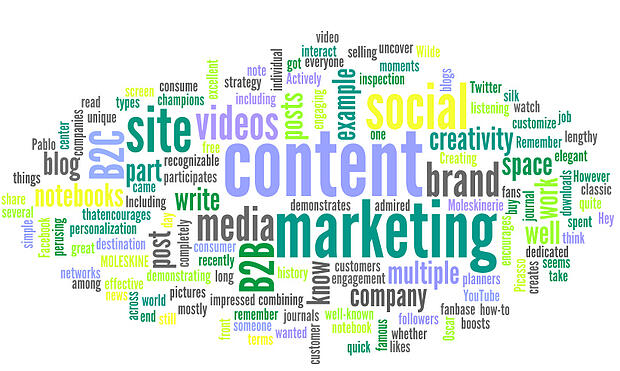
What is content marketing?








